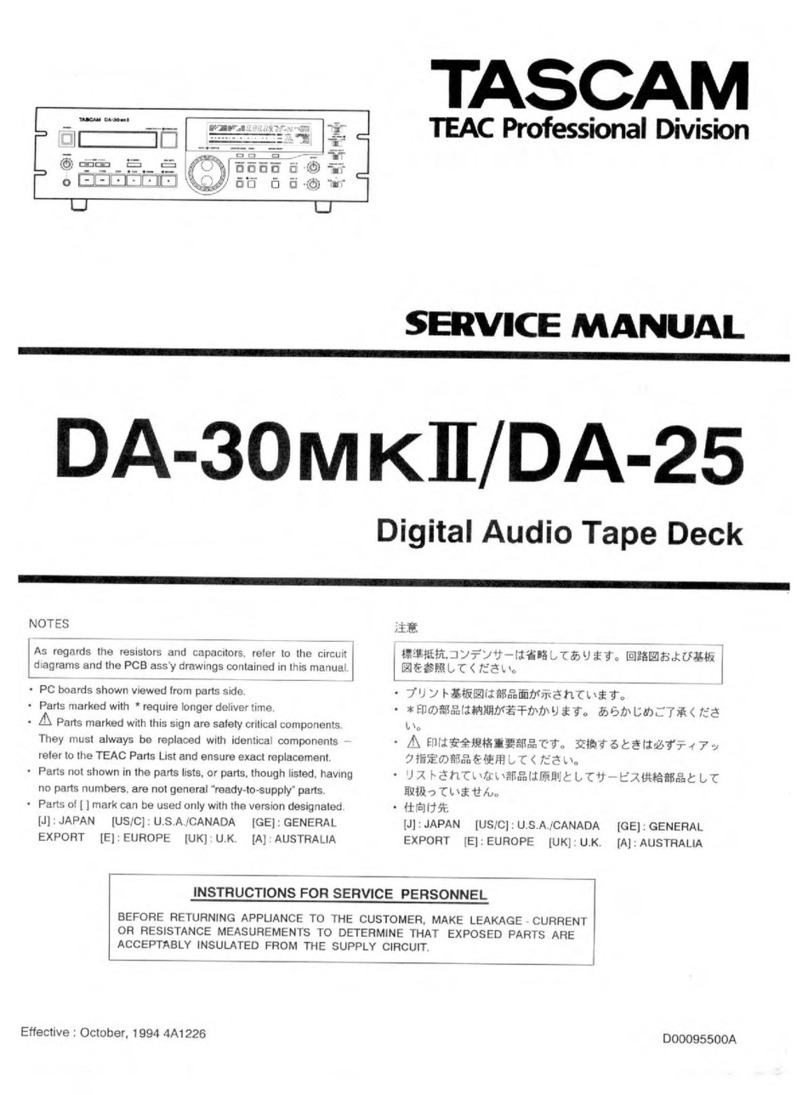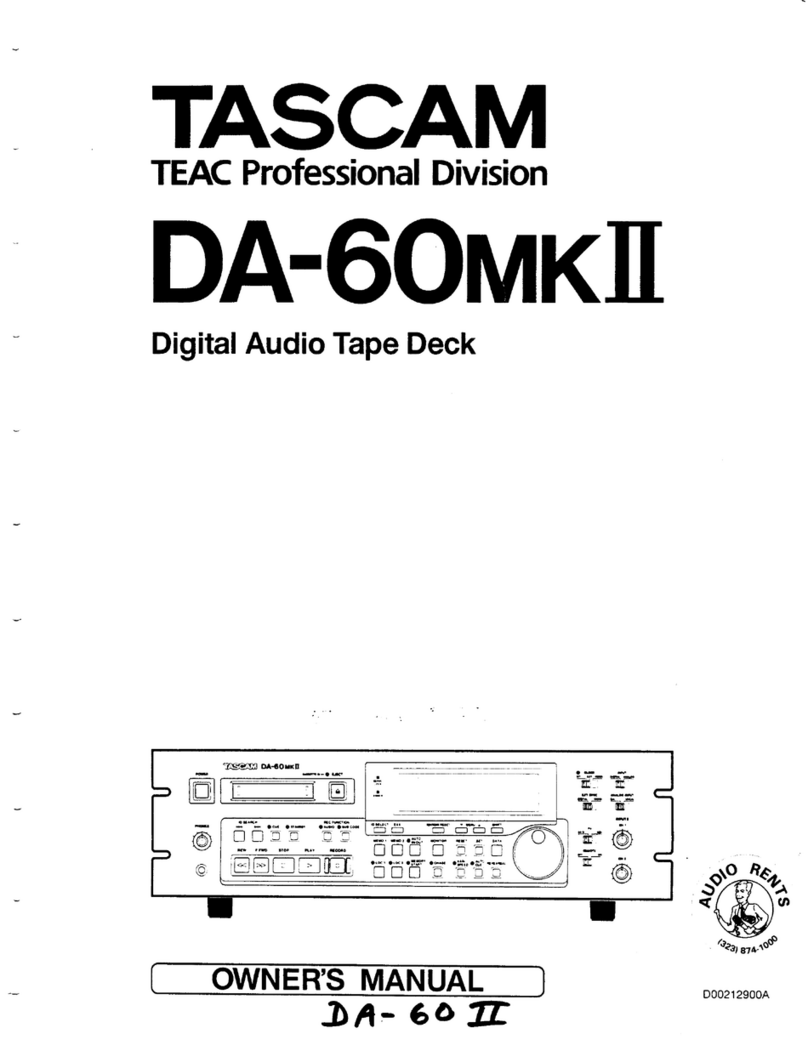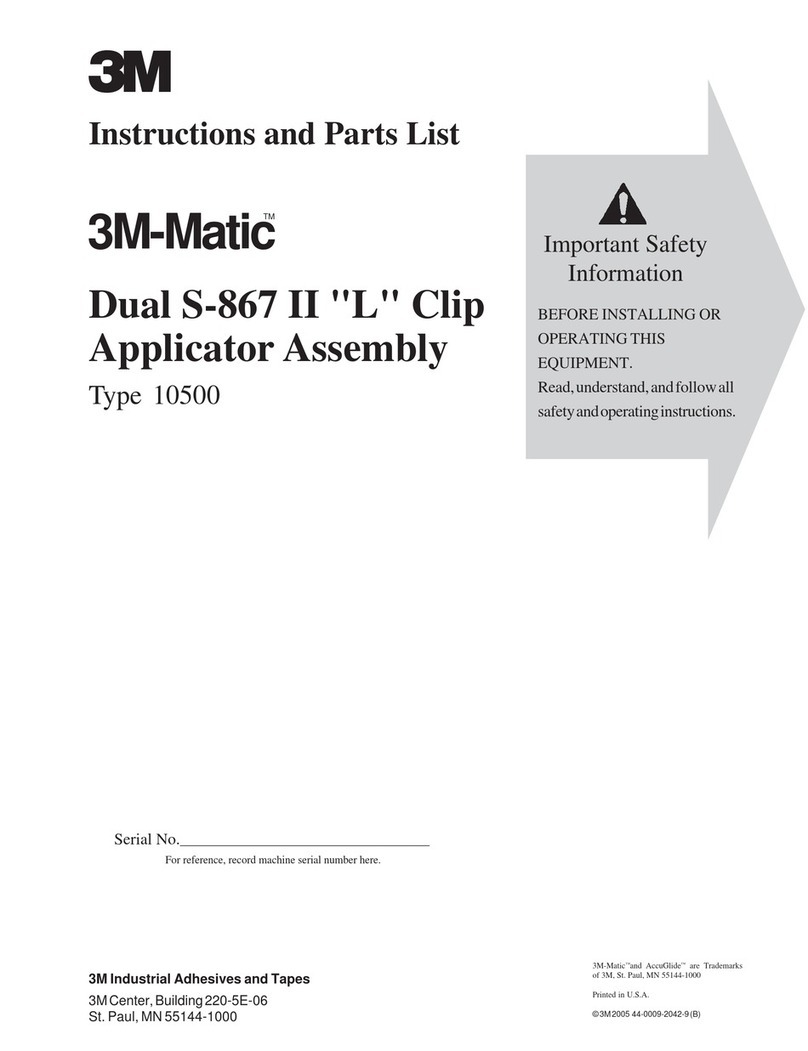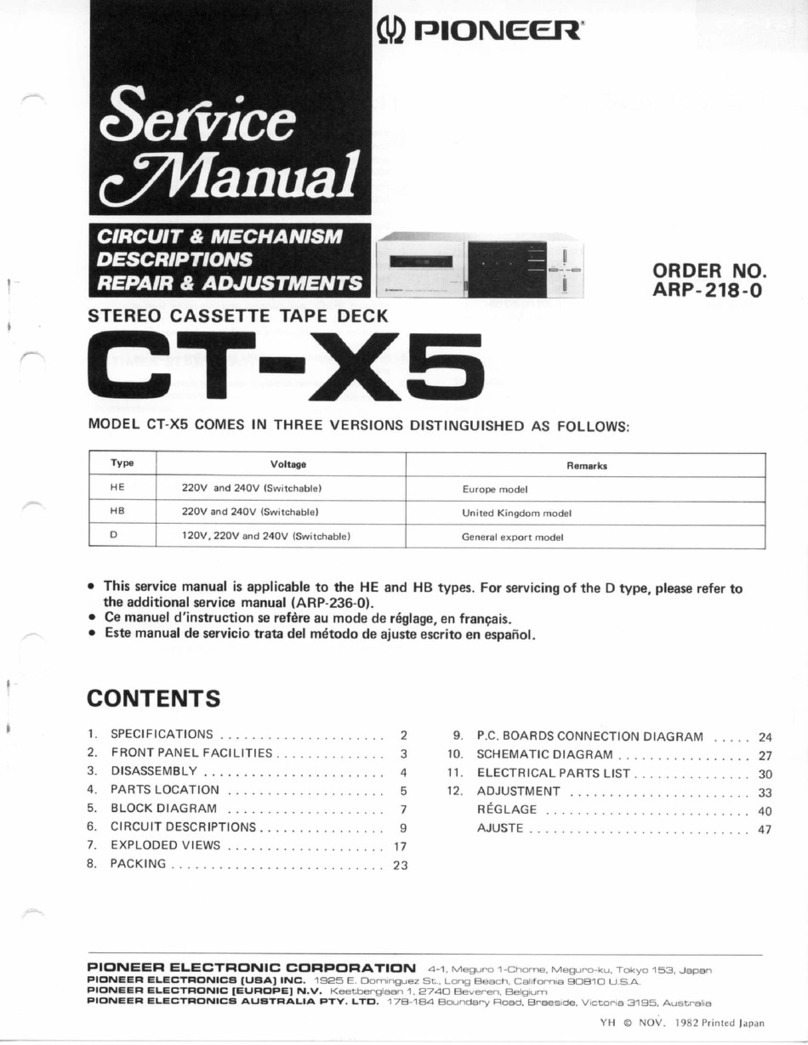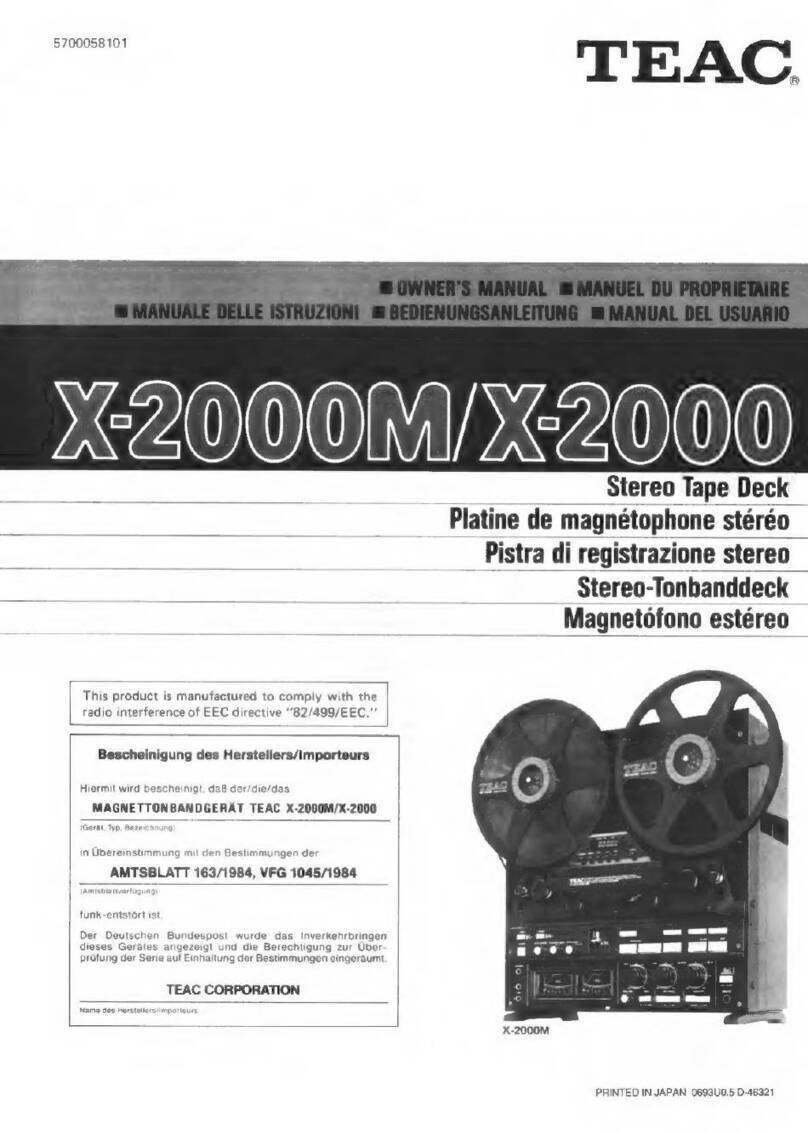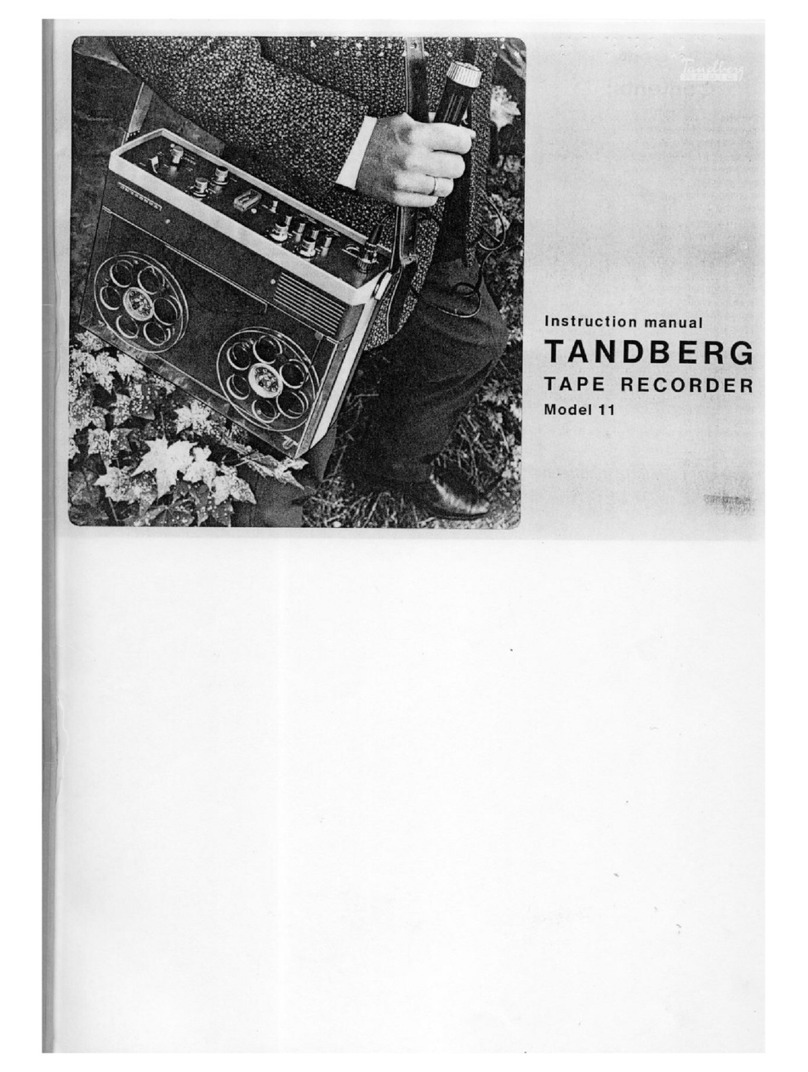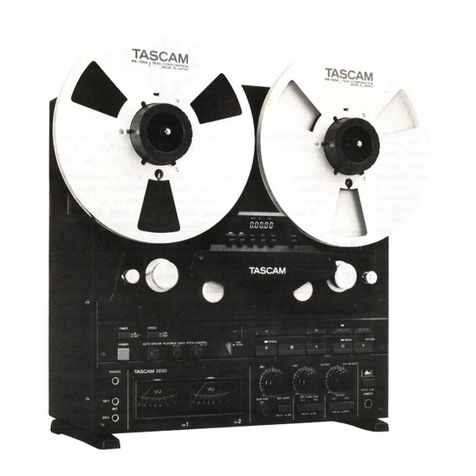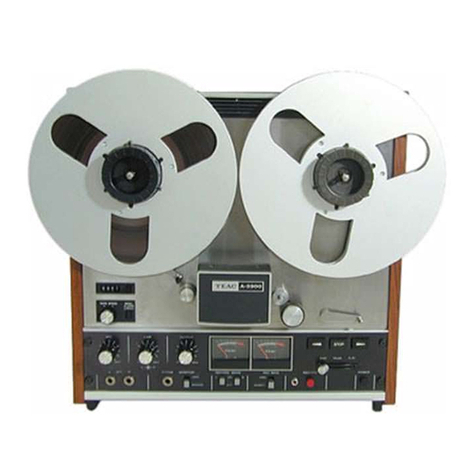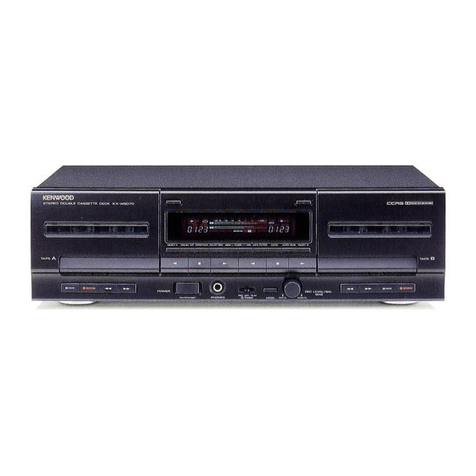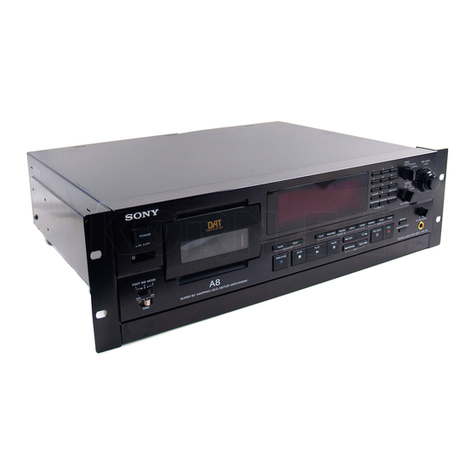=
c
2.8-3 ItU FAST FOBWABD MODE
1. Load a TEAC YTT-9013 test tape on the left reel table and an
empty reel on the right reel table, then thread the tape.
2. stop the left reer by hand and set the deck in fast fonaard mode.
3. Adjust R257 to obtain a t00g to l20g (3.boz -4.2ozl value at
point A (0btain a I l0g or 3.g oz value as far as possible).
REMARK: Back tension in fast forward (or fast rewindl is auto_
matically set when tape speed is adjusted as in paragraph
2-12_2.
2-84 ItT BEWIND MOOE
1. Load a TEAC yTT-9013 testtape on the right reel table and the
empty reel on the left reel table, then thread the tape.
l. !,9.0 the right reel by hand and ser the deck in the rewind mode.
3. Adjust R255 ro obtain a l00g to l20g (3.502 -4.2ozlvalueat
point B (0btain a l00g or 3.goz as far is possible).
2.9 TENSION ARM HEIGHT ADJUSTMENT
1. Thread any standard tape oh the deck using a standard empty
reels such as TEAC RE-1002.
2. Set the deck in the play mode.
3. Stop left (right) inertia roller's rotation by hand.
Adjust by turning the left (right) tension arm height adjusting
screw (refer to Fig. 2-10) so that the tape moves in the center of
the inertia roller.
II0TE: When adjusting, pay special attention to the relationship
between position-detecting shutter and the opening of
photo-interrupter to prevent, for example, the shutter
from being caught.
4. Release the inertia roller. Fine_adjust the adjusting nut again
until there is no tape curling on the tape guide pin between the
erase head and the left (right) inertia roller.
5. After Adjusting the height of both left and right tension arms,
check that the tape running condition is good by switching be_
tween fast forward and rewind modes.
6. lf the tape running position is different when the inertia roiler
stops and when it turns, the conditon when the inertia roller is
rotating has priority.
2-8-3 FF7>2e>=:dl*
1.'ti-4|F.\at.) -)tJ(Eu _)D) atrt U<FF=_ t-.trr5
( i - i t +_1- d t rs Lr#i f-E t. f+ I ) .
2. AaltE I.- >- D . J_ _ t & \7,R257 & *b t T _ > >
= > t ltog + 10g ( t g a t: ttl 10s t.iE. r\1d) lr 6gq 5 .
aa : FF(REW)Wo)tj-_t ftrlj-j. ->> = > (/\,y j
. - > > = >) I*,2_72-zrFt.i6^6 FF REW) r_7.
7.u l-.;iEgt..k u HsrF!t.Ev t_dfi*d.
2-8-4 REWT>!=>EB*
1.ti-4lFtlat.) -)D(x71.) _)t )6Hf t, rREW=_ F t.d
4 (= t & rt.fi tt td.r\)DiLq t.{*l) .
2. Bo)[XEI.- >, D. )_ _ t & liT,R2556 *b l:T i > ) =
> t tt}g + r0g ( t6 6 fc 111 tOg tti[ urifi ) tr 694 5 .
i+. : FFSREWd)t> j/= >l3:t6.6r\- U+ U < T6.
2-9 7>>=>7-L.A+EH#
f .i.y.FO=- F :pLAy.
2.ffi# l, e. - xt 3l1tl.: h 4 ts E - - alpld,^& +< tr..r, fi
-r h.tr -oE>t_tj )h\rt.ftt6&)t.j>)=
> p - 1lF,d AEISJ-,y F (Blz-r\+Hil &ffi#-{ 6.
3. +f{Frtd11 t:h -( ts E - - tfh. L,,i-l t-. tr _- tiH*
^'y f a ffra- - i fi 4 I- L > aFfr< = _ ) h\h _ )t, U f+
L\A ) l.BE- ) )t = )t 7 - Ata'dffig + jl,& lffiffilgt 6.
4.thD-)) = ):p -A€:dffi#1*., FF, REWr)ffiE tJ$,
lF6: 1i'> T - - ) rt.Tr ltffi& n 6 .
i*. : h'( t- D * - &E tldiltE+- E*ndlitrF*t < t _ j
rt.1iln-Eh\qILt 6t+.*ttti-r F. ! --tEl$x +a j_J
+J re@%t 6 .
Figure shows left side tansion arm.
I'xl l* lr.lF.tli > > = >. p - A&it .
\
ctension arm
height adj. screw
positiondetecting shutter
Fis.2-1o
left tension arm



